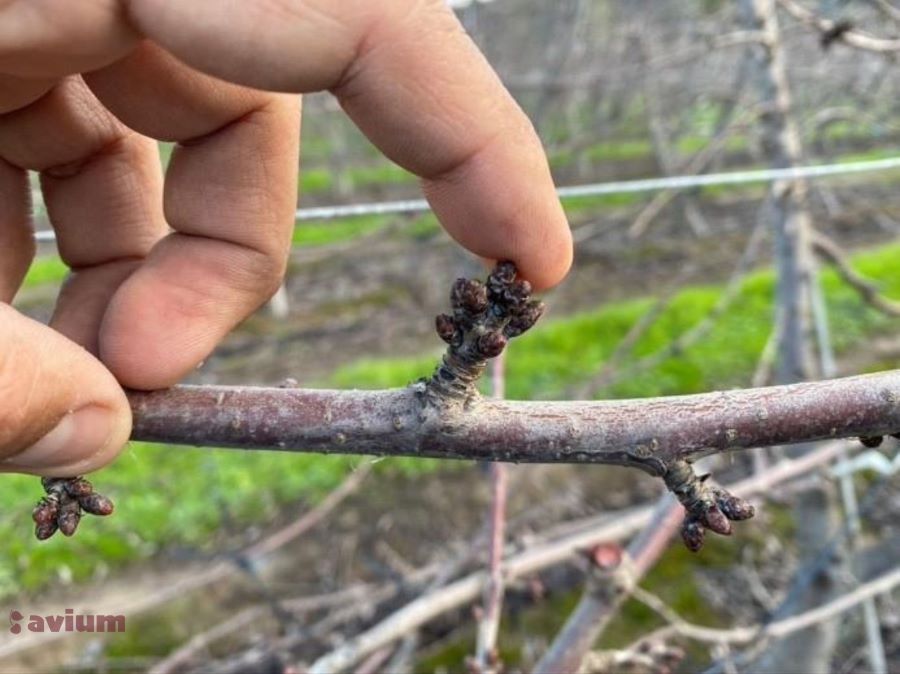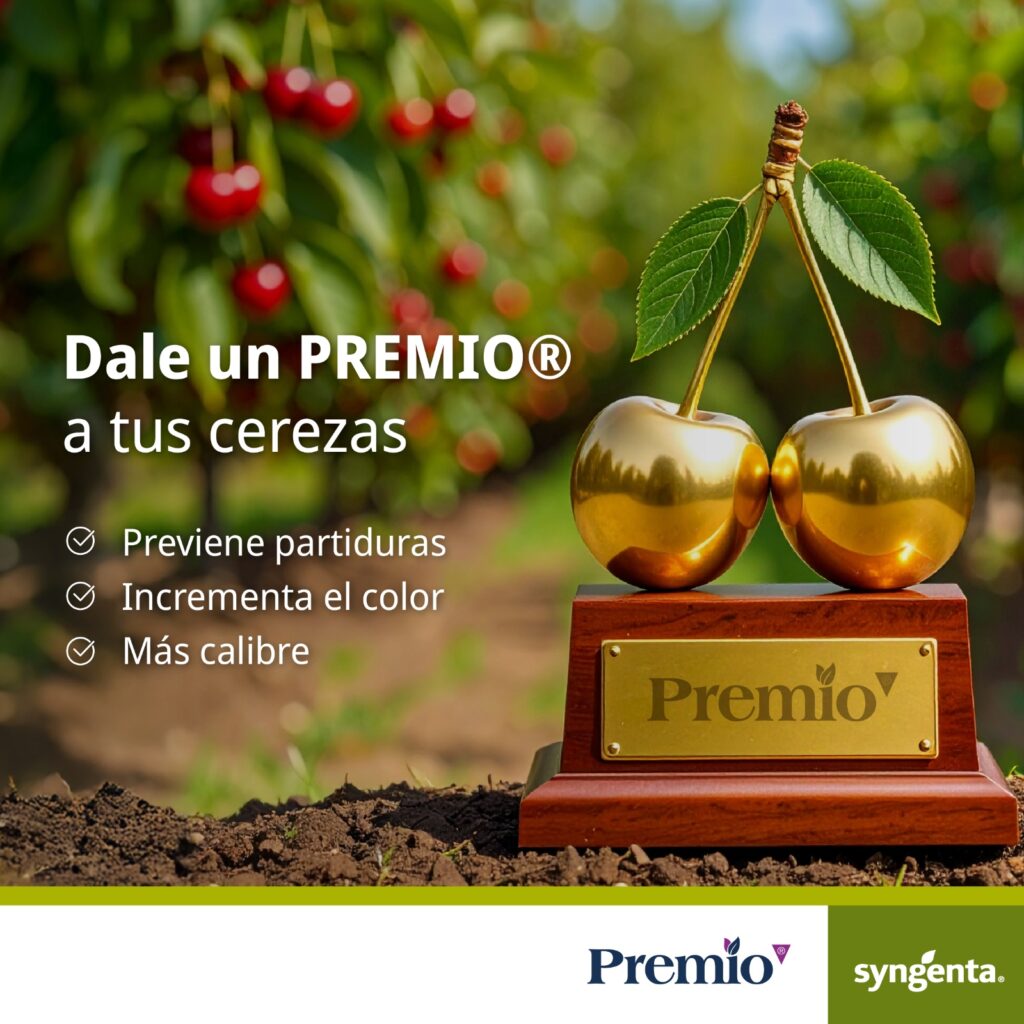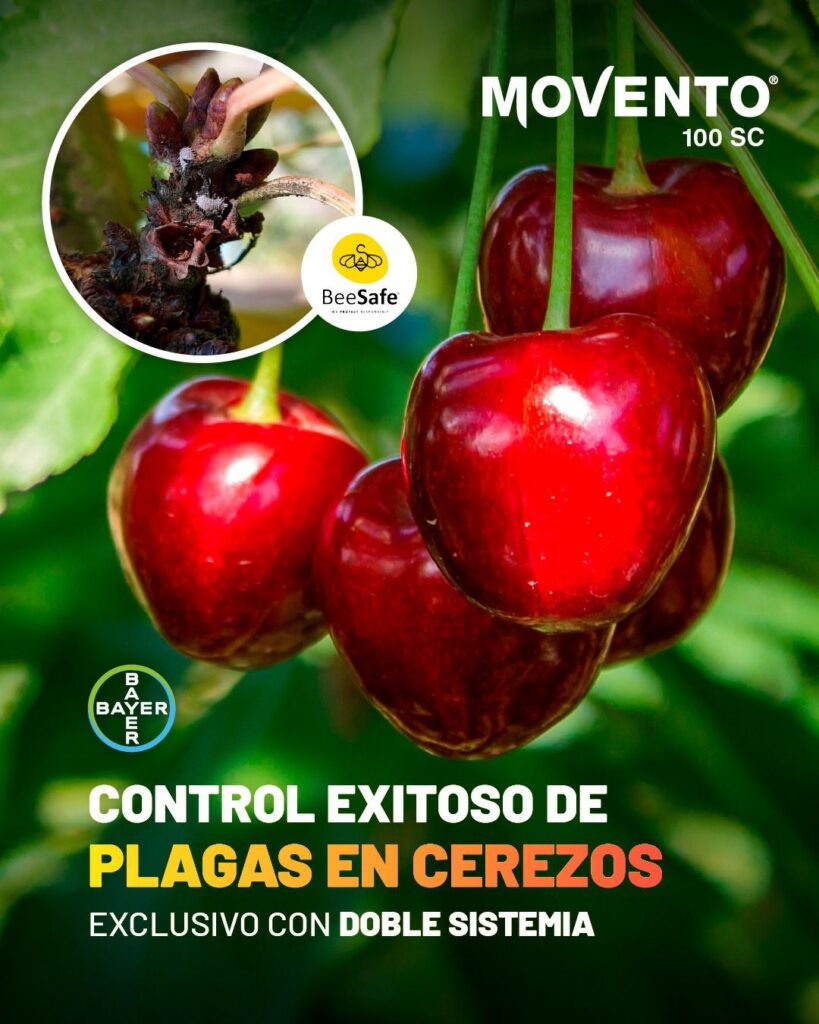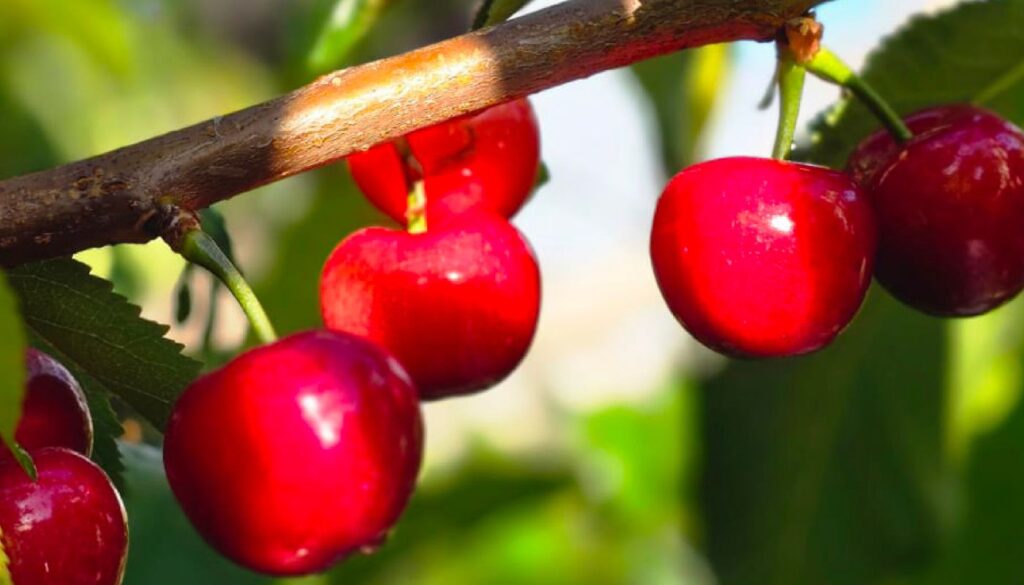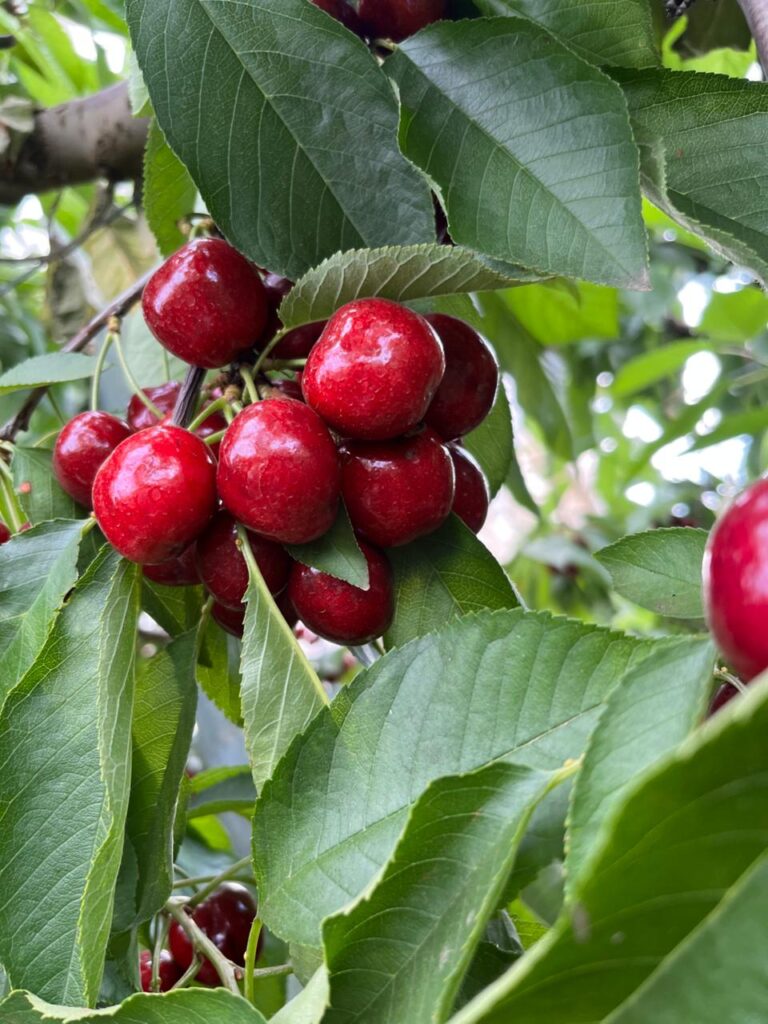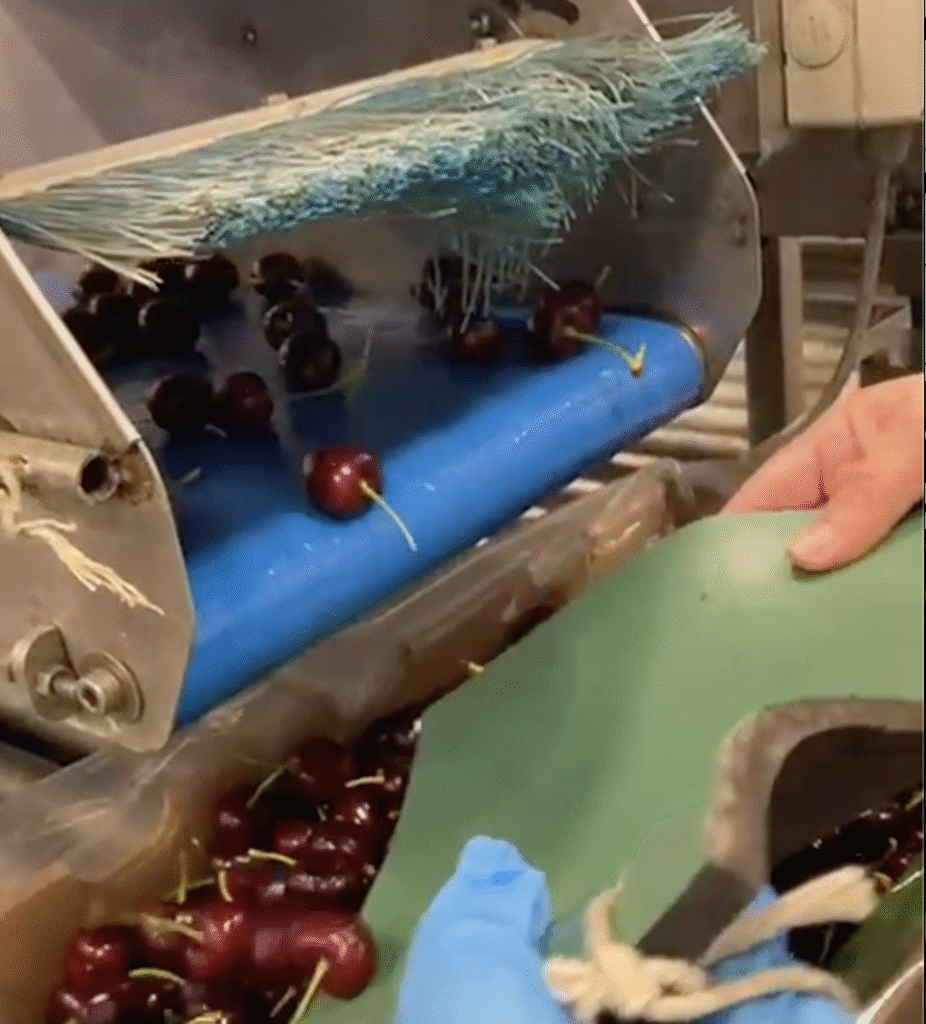By: Matias Kulczewski B. Agricultural engineer, KyR Consultants, POMANOVA Corporation.
Carlos Tapia T. Agricultural engineer MSc, Avium, POMANOVA Corporation.

Introduction
Fluctuating production and its lack of predictability is a fundamental aspect of cherry production.
This season has been marked by indicators that raise fears of a lighter final setting; among these, summer with spider mite attacks and irrigation water shortage, high temperatures in summer and autumn and lack of winter cold, are factors to take into account when planning field management in order to achieve production potential.
However, ongoing bud analyses are showing a relatively normal situation in terms of availability of flower primordia and there are again several cases of abundance of healthy flower primordia per fruit centre (about 18-20 primordia), which invite us to review and consider options for thinning the crop.
Considering the above, we have considered it appropriate to review a very comprehensive research that we conducted in conjunction with Washington State University, represented by its extension agent Karen Lewis and sponsored by American funds. This work was presented at the IFTA (International Fruit Tree Association) Conference in the summer of 2012, which was organized by our beloved POMANOVA Corporation in Santiago, Chile.
That season, research was conducted that, for the North American reality, had as its main objective to evaluate a prototype of a portable equipment for mechanical thinning, while for our industry and for the world of cherries in general, the objective was to evaluate the effectiveness of the different thinning opportunities offered by the crop in terms of production, quality, labor required and costs.
As we know, the risks of overproduction are very specific to each plantation, where the variety, rootstock, pollination and even the unpredictable climate are the main determinants. However, even in less benign climatic years like the present one, experience has shown that overproduction is more to be feared than lack of it, since the latter takes care of itself, especially in the cherry business.
Research and results
In 2 orchards with a history of thinning, one of Lapins/Maxma 14 in Sagrada Familia, Curicó and one of Sweetheart/Maxma 14 in Romeral, both on a central axis at 4.5 x 2.5 m, manual bud thinning, mechanical thinning with portable equipment on 2 occasions during flowering (20 and 80% flower), manual thinning during flowering (80%) and fruit thinning prior to stage 2 of stone hardening, approximately at “jacket fall”, 21-22 DDPF, were studied. All were compared with an absolute control without any load regulation work.
The treatments were standardized for winter pruning and the thinning intensity was homologated, adopting the manual thinning of buds as a guideline for the intensity adopted in the remaining treatments. This meant making many counts in the 3 plots of 2 trees (6 repetitions) of each treatment.
The portable mechanical thinning equipment used was that in Figure 1, whose battery is in the form of a jacket worn by the operator and is charged during the previous night and lasts a few hours, so it is advisable to have a double set of batteries for a larger commercial scale operation.
Figure 1. Used portable mechanical thinning equipment
Table 1 below shows the yields and fruit size, illustrating that all types of thinning were effective in these fairly fruitful orchards. It can be seen that bud thinning was the most effective, but that the more delayed fruit thinning was also effective in restoring the size of these overloaded trees.
Table 1. Production results (kg/ha and kg/ASTT) and average fruit weight (g) for each thinning treatment in the Lapins and Sweetheart cultivars.

The resulting caliber distribution curves, on the other hand, “speak for themselves” (Fig. 2 and Fig. 3).
Figures 2-3. Caliber distribution according to load regulation treatment for Lapins and Sweetheart varieties.
Lapins

Sweetheart

When analysing hard data on the quality of the fruit in the different treatments, it can be shown that the most affected indicator is the soluble solids (ºB), but not the durofel as is usually logically thought due to its greater loading potential (Table 2).
Table 2. Soluble solids (ºBrix), Durofel and % of fruit discard for export according to thinning treatments for Lapins and Sweetheart cultivars.

This result has been consistent in several other experiences, including other thinning studies, as well as the comparison between orchards and “extreme” experimental trees in the 2017 “harvest” in Chile (Table 3). As in the previous research, in this one it is observed that – along with size – the quality characteristic most affected by the load is the soluble solids (ºBrix), which give the sweetness (and acidity) to the fruit, but not the firmness. In this regard, it is worth remembering that acidity is important in the longevity of cherry storage, so an overload is very detrimental for our cherries, whose business is based on their being able to run a marathon to distant markets.
Table 3. Numerical comparison between a thinned orchard and a control orchard without thinning during a season of high fruit set and its effect on some production and quality indicators. Source: M. Kulzcewski, personal information.

As a fruit with a “100m flat and hurdles race”, the cherry has fairly short times to diagnose, decide and execute its thinning, which, in addition, due to its small size, is highly labor intensive.
For this reason, it is worth remembering that pruning is the first and most important thinning of the year that we recognize, that fruit set is one of the events that has the greatest unpredictability in cherry cultivation, in addition to the fact that many farmers justifiably fear climatic accidents, arguing also that this or that plantation “is too stunned” to thin out. The problem arises in variety/rootstock combinations that are very heavy and with over 18-20 primordia per fruit center, as is the case again this year in several cases reported by the bud analysis. The subject of “fruit set” is enough for another article, but in this experience we measured from 20 to 40% of fruit set and only 10 to 15% of “stun” after thinning and always less where thinning had been done than where it was not done. In cases such as those of the reported research and any plantation of the species, the time periods for carrying out thinning during flowering and fruit set are very short (normally no more than 7 days in each case) and with high requirements for labor and supervisors.
Table 4 shows the labor requirements of the experimental treatments, highlighting the economy of the technique with portable equipment evaluated and the high labor requirements of all the others, although with the advantage of a longer time (at least 4 weeks-20 days) for bud thinning, which was also noted for its superior effectiveness. It is considered that in the rest of the treatments they should only be carried out within 7 days. In the case of the need for people to carry out each treatment, it is considered that a work day is equivalent to 7.5 hours.
Table 4: Comparison of time required (hours/ha) to carry out each thinning treatment and labor requirements (people/ha).

As can be seen in the table and as we have also experienced in many other cases, a large number of people are needed for cherry thinning when there is high fruit set, making it quite difficult to execute and control as it is postponed to flowering and even more so to fruit set. This must also be considered according to the effectiveness in meeting the objective of each task, and in this sense, the research presented shows that, although bud thinning is a costly task, it is undoubtedly the most effective and objective when deciding the intensity of thinning, allowing it to be carried out with greater anticipation and in a longer period of time, in addition to a greater and better possibility of having permanent supervision of the task.
For all the above reasons, our proposal for “setting” cases is progressive thinning, which starts with more intense pruning, followed by bud thinning and can be supplemented with thinning during flowering to correct where too dense “pom-pom” flowering is observed, relegating fruit thinning only to correct an as yet unpredictable excess of setting, which, although it does not seem to be expected this year, there will surely be cases in which it may happen.
It is also worth noting that, like a “100m hurdles race”, the cherry race requires a continuous look at the orchards, at least a couple of times a week, from now on when the buds are swollen.
Looking to the future
Short deadlines and the increasing shortage of labour for carrying out intensive work in the field invite us to think about new projects.
Among these, the choice of productive varieties and rootstocks is a necessity, which with the numerous technological advances to protect the crop and better ensure its production, will generate more frequent situations in which overproduction threatens quality, as the main attribute of the sustainability of this business.
The path of less productive, vigorous rootstocks has not been the best to ensure productivity in the reality of our country, but there are realities with a higher frequency of excess production within fruit centers, as well as others where this problem only appears in years of high fruit set. However, it should also be noted that when more vigorous (and more youthful) rootstocks are used, well treated based on this characteristic, high productions have been achieved, of good quality and condition sustained over time.
In this regard, it should also be noted that tests with chemical thinning in cherry trees have been inconsistent, easily going from lack of effectiveness to over-thinning, so it is still a technical solution in the distant future of development.
Considering the natural uncertainty of fruit set and the diverse realities regarding climatic risk, it is advisable to adopt a progressive thinning system, which starts with pruning supported by bud counts and analysis, and continues through the stages of flower bud thinning, flower thinning and fruit thinning, with greater support from mechanical and chemical methods that allow avoiding the excessive need for labor in a very short period of time.
We take advantage of this to raise this technological challenge for the coming years in our flourishing cherry industry, where the choice of training systems that are easy to operate, with simple branches in 3D systems and/or with thin crowns in 2D systems is likely to be an important ingredient for this reality, which we often do not consider when choosing training systems in new cherry projects.


